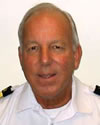
Rich and Great American III continue their passage, currently South of Tasmania, Australia. These waters also have seen the wakes of hundreds of sailing vessels as the countries of Australia and New Zealand opened up to settlement and the subsequent trade back to Europe. Tens of thousands of tons of grain, wool and later meat, were shipped via the Southern Ocean and Cape Horn, up the South and North Atlantic to, in earlier days, mainly British ports.
With the discovery of gold in Victoria, Australia, valuable shipments of specie, additional to the standard cargoes, were made out of Melbourne back to the United Kingdom, utilising ships of many nationalities. The passages undertaken were fraught with danger as the vessels were required to sail tracks which took them deep into the great Southern Ocean, with its terrible weather, huge seas, poor visibility, and the very real risk of icebergs in the summer months.

Those vessels on the Great Circle passage from Australia, had, in addition, to deal with the fact that the charting of some of the islands South of New Zealand was far from perfect. The Auckland Islands in particular, first discovered in 1806, were charted so far out of position that many sailing ships were to have their final moments being dashed to pieces on these inhospitable shores. Some survived the wrecks, however to this day, the graves of a number of those shipwrecked people remain on these unpopulated Islands.
Between 1833 and 1907 ten different vessels met their end, so many in fact that the New Zealand Government set up a number of provisioned survivors huts so as to enable distressed mariners to have some sort of shelter and sustenance. The most famous wreck was that of the American vessel, General Grant, in 1866. Registered in Boston, General Grant had cleared Melbourne on May 6th and some ten days later was wrecked. Sixty eight people perished immediately with another 15, 14 men and one woman, making it to shore. One person subsequently died on the Islands and another four were lost at sea in an attempt to reach New Zealand and raise the alarm. Eighteen months after the wreck, nine men and the woman were finally rescued.
With modern navigational equipment, up to date weather forecasting, and extremely accurate charts, it is highly unlikely that any of the vessels participating in the Vendee Globe, would even sight the Auckland Islands, let alone be wrecked. There is, however, two safe harbours, with anchorages, given that any of the yachts require to stop in order to make repairs or to seek shelter.
